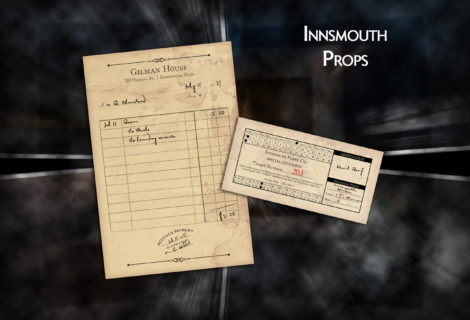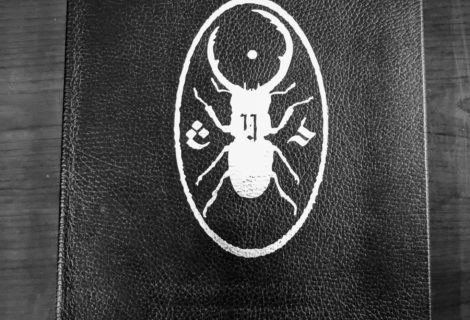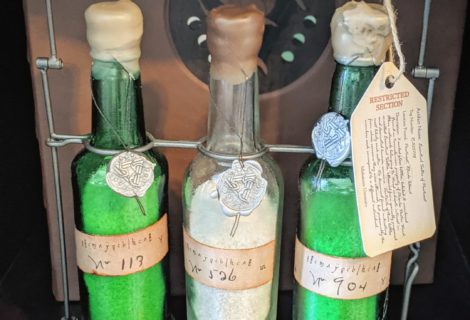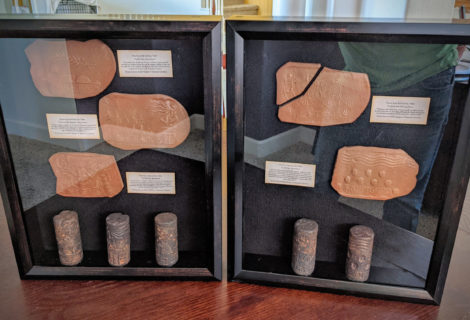Experimental Map Handout – Printing and Aging
One of the projects I’m working on right now is making props and handouts for my recently purchased copy of Chaosium’s Horror on the Orient Express campaign for Call of Cthulhu.
I started with a simple print out of the route map. Decided to experiment a bit to try and produce some different effects I can use for other handouts and props. The end result – or close to it anyway – is a nicely aged map that has a heavier/coated feel to it. Nicer maps designed to hold up the elements have a coated/leathery feel to them, and I wanted to try and replicate that.
A couple of important things to note:
- The original file includes some faint halos around most text that looks a little like a bleed.
- I intentionally tried to screw this up at a few stages. That way I know how much wiggle room I have to play around with the process – plus I wanted to test how well the ink in my new printer holds up to the process.
- I seriously doubt this will work with just any inkjet printer and ink. There is a LOT of variety in inkjet inks. So if you try this, your results could vary quite a bit.
- Be sure to click each image to see the higher-res photo.
Printing
I printed the map on my new Epson Workforce WF-7820 printer. This uses a pigment-based ink. A big goal of this was to see how well this ink resists bleeding when exposed to water, as a common way of artificially aging paper involves water. It did not disappoint.
I printed the map on a single 11×17 sheet of 67-lb cardstock that has a vellum finish.
Aging
Ideally, you would let the print sit overnight to ensure it’s completely dry and minimize any possible bleeding. I intentionally took the printed page directly from the printer to soak and age it.
I placed the printed map on a baking sheet and soaked it in coffee. I looked carefully for any signs of bleeding ink. At worst, there was a very, VERY SLIGHT bleeding around black text. Since the original file includes some faint coloring around a lot of the text, it’s hard to tell if there was actual bleed. If so, it was just a faint bleed of black into the surrounding tissue, but it in no way impacted the crisp edges of the text. Again, I wouldn’t expect this result with any inkjet printer, but it seems this pigment-based ink holds up very well to water.
Then the map goes in the oven for 4-5 minutes at 225°. Flipped the map over for another 4-5 minutes. I placed it directly on the sheet, which evidently had some residual cooking spray on it. This discolored a couple of areas on the back. Simple fix is to always place the paper on a piece of parchment paper.
Waxing
This is where I was going completely experimental to try and get the coated/leathery feel. Basically, I’m using a wax designed to wax and waterproof fabric. In this case, it’s a product called Otter Wax, and it comes in a bar.
Straight out of the oven, I placed the still warm map on the counter and rubbed the bar back and forth over the surface. Again, this didn’t affect the printed details at all. As it’s applied, it adds a subtle, waxy sheen to the surface that slightly brings out the color. Flipped the map and applied wax to the back.
Supposed to let waxed fabric cure in a warm environment for 24 hours, so I initially left the map out overnight. The next day it still had a tacky, wax-like feel to it. Decided to put it in the oven (after I aged some paper for another project) for another 3 minutes. This finished the wax curing / absorbing into the paper. No more wax feel to the surface, and slightly heavier than the base cardstock. I applied a second coat of wax the same way, and put it in the oven again. You definitely feel the wax when you apply it, but coming out of the oven that slight stickiness is gone.
End Result
The aging process always makes the paper wavy and wrinkled, so after waxing the first time (and again after waxing the next day) I pressed the map under weight to flatten it out a bit. Then I folded the map and pressed it again.
The final map is definitely heavier than the regular cardstock, and it has a texture and feel very close to what I was going for. I might try another application of wax or two, just to see if it makes a difference. The waxing also enhances the aged look of the coffee-died paper. It adds a subtly mottled appearance to the paper that is very reminiscent of natural parchment.













Recent Comments